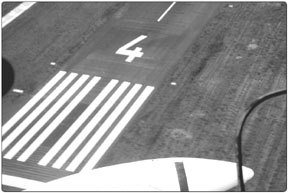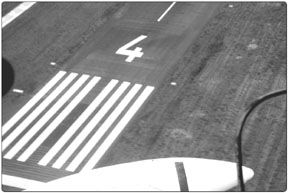
By Ray Leis
Pilots are always finding new and inventive ways to bend sheet metal, injure themselves and hurt their passengers. Many accidents are rightly attributed to pilot error, but could just as well be labeled error in judgment, despite the pilots skills. Unfortunately, its easier to develop good flying skills than it is good judgment.
But what is judgment, and how can pilots better learn to practice it and make better decisions? How does a lack of judgment result in accidents? And what tools are available to help us make better decisions?
What Is Judgment?
Judgment is defined as the mental ability to perceive and distinguish relationships and alternatives, according to the American Heritage Dictionary. We also use the term to refer to the information processing steps we go through to arrive at a decision.
All pilots need to work on improving their judgment. For example, the ability to make good decisions on weather, aircraft performance and our physical and mental states are high priority safe-flight items. This is the only way we can ensure correct exercise of our pilot-in-command privileges.
Good judgment can be gained through proper training, through proficiency flying with a purpose and through experience. Repeatedly reviewing possible problems we may encounter on a given flight is necessary, also. Once we understand the problem, we must use our judgment to make an intelligent decision on how to handle it.
The best time to make some decisions about an in-flight situation is when you are not flying. For example, its a lot easier to decide to divert to an alternate airport with less than an hours fuel while sitting in your living room rather instead of when youre 55 minutes from your destination. The key is to make these decisions before you go flying and place yourself under emotional pressure to do something foolish.
One reason to make these decisions is that there are times when, even if a pilot has excellent experience or his judgment has been good in the past, it doesnt seem to help. Those characteristics dont stop him or her from suddenly doing something that shows very poor judgment. Aviation psychologists have called this phenomenon Sudden Loss of Judgment, of which there are several varieties.
The Ordinary Buzz Job
This one is usually performed for friends and family, shortly after a pilot is certified. In almost every case a series of radical low-level maneuvers is attempted. The finish is usually flying into the ground, or stalling at too low an altitude to recover.
One example occurred on February 12, 1989, at Jasper, Tenn., when a pilot and his friend decided to fly a Piper PA-28-140 over to the pilots sisters house to do some low-altitude maneuvers. Witnesses saw the airplane make one or two descending left turns. The bank angle increased at less than 100 feet agl, as did the descent rate. The airplane collided with a 30-foot-high tree.Both aboard were killed.
The Airshow Performer
Here the pilot has been asked to fly his unusual or vintage aircraft and he cant resist showing what the airplane is capable of doing. The pilot generally has never done any aerobatic flying before. Most of these stall/spin to crash, or fly into the ground, or pull the wings off doing something that the designer never dreamed that a pilot would try.
Two pilots took off to wring out a North American SNJ-5C (AT-6) on August 13, 1998, at Winlock, Wash. Witnesses at a residence on the airstrip observed the airplane make a low pass along the east-west runway, followed by an eight-point roll, a 90/270-degree course reversal and another low pass to the west, with a pull-up into either a loop or a Cuban-eight maneuver. After this maneuver, the airplane was observed in a nearly level attitude, before the left wing dropped, and it disappeared from view behind trees. The pilot and his passenger were fatally injured.
Pressure Cooker
Too often, passengers take over the decision-making for the pilot. For whatever reason, they must get to the destination, regardless of weather, operational concerns or the pilots skill. The pilot is aware this is what they expect from him, and he gives it a final try. The result? Their destination has changed permanently.
On March 29, 2001, at Aspen, Colo., a Gulfstream GIII crashed short of the runway shortly after sunset. A new Notam made the approach procedure unauthorized at night. The NTSBs probable cause finding noted pressure on the captain to land from the charter customer and because of the airplanes delayed departure and the airports nighttime landing restriction.
What To Do About It?
Pilots may want to consider establishing personal limitations, or a set of safe standards that they will never break or amend until more experience is gained. Unchangeable limitations should be established for weather, and night flying, runway length, loading and range, and personal health.
Accidents in airplanes can happen to anyone, including you and me. This can be a hard thing to accept for many pilots, especially those for whom flying is a reflection of their individualism or can-do attitude. But, once a pilot comes to accept that bad things can happen to him or her in an airplane, he or she is more motivated to be alert and to expect the unexpected.
The expert professional pilot plans ahead, thinking through each step of the way on every flight. By being prepared and having a course of action in mind, developed by anticipation and preparation, a pilot can prevent a potential disaster.
An accident is the culmination of a series of events, each event reducing your choice or flexibility by some amount. The final event often leaves the pilot little or no choice and the accident occurs. Planning ahead for each event in the chain and having a predetermined response to them-making the proper decision well before the event occurs. Training yourself to make good decisions by practicing good judgment before you even get into the airplane can allow you to avoid most accidents.
Tools You Can Use
The sidebars accompanying this article each explore different recommendations for pilots to use in evaluating their behavior, making sound decisions and assessing the risk of a proposed flight. Many more resources exist, including other, more-experienced pilots, your flight instructor and formal training materials. Use them.
Conclusion
As a pilot-in-command, you want to act in a non-hazardous manner. Balance all of your thoughts against the possible outcomes. Learning to examine your own thinking and to control hazardous thoughts is the critical part of using your judgment.
As a result, to the extent you plan ahead and refuse to act on a hazardous thought, you will be a far safer pilot.
Also With This Article
“The ‘Other’ Attitude Indicators”
“How Do You Assess Risk?”
“Evaluating Change”
-Ray Leis holds ATP, CFII, Commercial and glider certifcates, and is a Designated Pilot Examiner for all ratings.




